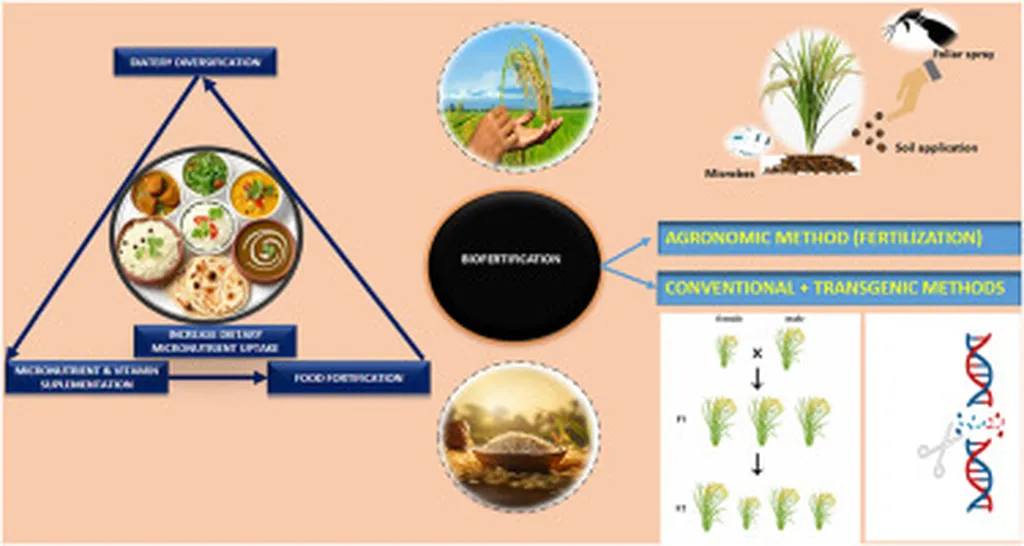In the ever-evolving landscape of agricultural science, a recent study has shed new light on the intricate world of grain proteins in rice and barley, offering promising insights for both farmers and food manufacturers. Published in *Frontiers in Plant Science*, the research delves into the biosynthesis, regulation, and functional impacts of storage proteins in these staple crops, potentially revolutionizing how we approach crop breeding and food production.
Rice and barley are dietary staples for millions worldwide, but their value extends beyond mere sustenance. The proteins they contain—glutelins, prolamins, and globulins—are not just building blocks for the crops themselves but also hold significant nutritional and health benefits. “These proteins provide essential amino acids and bioactive peptides that have been shown to have anti-hypertensive, immunomodulatory, and cholesterol-lowering activities,” explains lead author Essam ElShamey from the Biotechnology and Germplasm Resources Institute at the Yunnan Academy of Agricultural Sciences in Kunming, China. This makes them invaluable in the realm of functional foods and nutraceuticals, where demand is growing rapidly.
The study highlights how genetic and environmental factors influence the protein profiles of these crops. Understanding these influences is crucial for developing strategies to enhance the nutritional quality of rice and barley. For instance, by identifying key transcription factors like RISBZ and RPBF in rice and BLZ1/2 in barley, researchers can pinpoint how these proteins are regulated and synthesized. This knowledge opens doors to precision breeding and metabolic engineering, techniques that could lead to crops with enhanced nutritional profiles.
The commercial implications of this research are substantial. As consumer demand for healthier, more functional food products continues to rise, the ability to tailor crops to meet these needs becomes increasingly valuable. Farmers and agribusinesses could benefit from higher-value crops that command premium prices in the market. Additionally, the insights gained from this study could drive innovation in food processing, leading to new products that cater to health-conscious consumers.
Looking ahead, the potential for biofortification—enhancing the nutritional value of crops—is particularly exciting. By leveraging the findings of this research, scientists and breeders can develop rice and barley varieties that are not only more nutritious but also more resilient to environmental stresses. This could have a profound impact on global food security, especially in regions where these crops are dietary staples.
As the agricultural sector continues to evolve, the integration of advanced biotechnological tools with traditional breeding methods will be key. The research published in *Frontiers in Plant Science* underscores the importance of a multidisciplinary approach, combining genetic, biochemical, and environmental insights to drive innovation in the field. For farmers, food manufacturers, and consumers alike, the future looks promising, with the potential to create healthier, more sustainable food systems.

